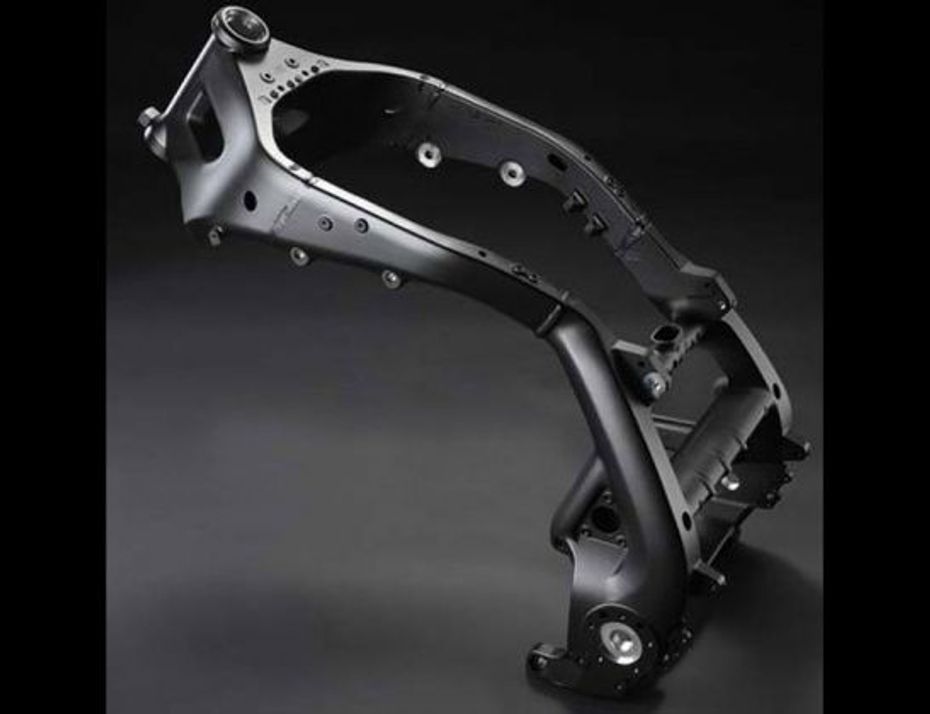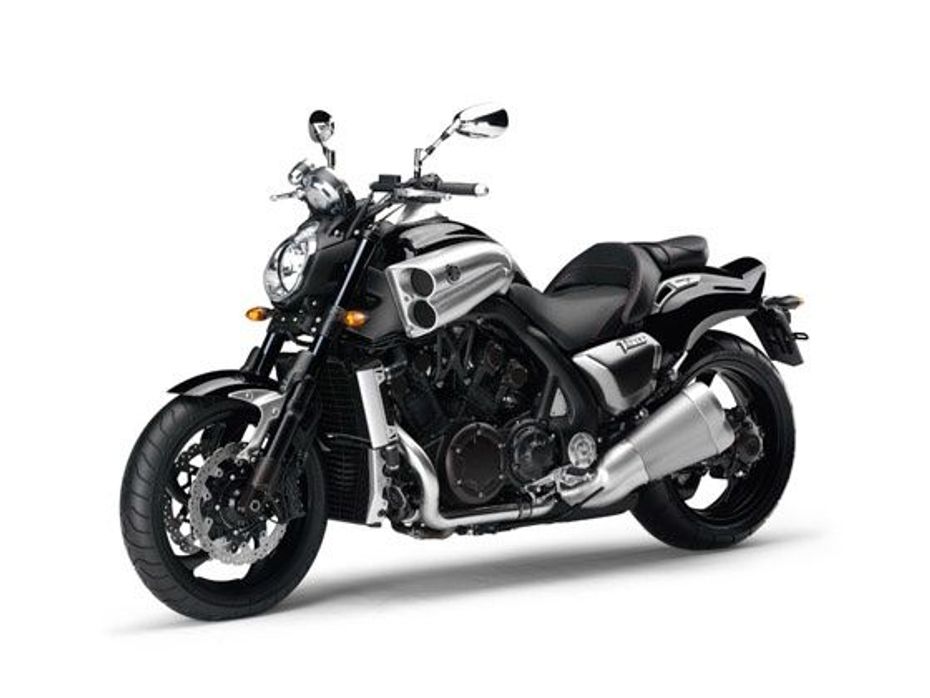
Yamaha VMAX Infrared Custom Cafe Racer Showcased
- Feb 16, 2015
- Views : 14879



The YCC-I system is designed to vary the intake funnel length to give an optimized intake pulse that best suits the prevailing engine speed. In very general terms, a long intake passage tends to improve low to mid-range torque while a short passage helps at higher engine revs. In the VMAX, when the engine revs climb over 6,650rpm, electronic servomotors make each intake funnel separate instantly, creating a shorter intake measuring only 54mm, which enables the massive V4 motor to deliver even stronger performance from the mid-range right through to peak rpm. YCC-T on the other hand is a fly-by-wire system which using high computing speed assesses the engine's running conditions every millisecond and factors that into the equation along with the amount of throttle input from the rider to optimize the amount the throttle bodies need to open. This allows for instant throttle response at any engine speed along with the desired torque curve in all conditions and also prevents the engine from bogging down should the throttle be snapped open too quickly.
Another innovation with the VMAX's engine are the new 4-valve compact pent-roof combustion chambers which along with the introduction of an ingenious new camshaft drive system save a lot of space in the cylinder heads. Yamaha's engineers have designed an all-new system in which the intake camshaft is driven by a chain, while the exhaust camshaft is driven by a gear mechanism. This innovative combined chain and gear cam drive minimizes the pitch between the intake and exhaust camshafts, which in turn permits a much more compact design. Despite a 40-percent increase in cubic capacity with the new engine, the smaller head and narrower V-angle of the cylinders (65-degrees), the new engine's width is approximately the same as that of the old one and overall height is only 6.5mm more. This helps centralize the engine's mass as well, improving overall handling characteristics of the new VMAX.
Just like its predecessor, power to the rear wheels is sent through a shaft drive system. But the new VMAX's system has been made much slimmer and more compact, while reliability has been dramatically improved. Among the other race-bred technologies to make their way on to the new VMAX is a slipper clutch, which prevents rear wheel lock up when downshifting rapidly. The new 4-1-2-4 exhaust system with short upswept mufflers not only sounds and looks fantastic, it also features a 3-way honeycomb catalyser to reduce exhaust emissions and meet stringent EU3 regulations.
The old V-Max was known to be a terrible handler and was designed only to be fast in a straight line. Now this might have been acceptable in the 80s when drag racing was huge, but it definitely won't fly with the modern, discerning motorcycle buyer. So this new VMAX comes with a completely new advanced-specification aluminium frame which has been designed to deliver high levels of handling performance.

The new diamond-type frame features an immensely strong yet lightweight structure that is made up from a variety of gravity-cast, CF die-cast and extruded aluminium sections. This innovative new design incorporates gravity-cast components for the main frame and pivot assembly, while the rear frame is made from a range of Yamaha's exclusive CF die-cast parts and extruded parts which are welded together. This combination of these different types of aluminium, each with a different rigidity level, is one of the major factors in achieving the desired balance of rigidity. And by incorporating the V4 engine as a stressed member - using cast-iron mounts at the front, the centre of the V bank and at the top and bottom of the crankcase - the overall chassis rigidity balance is further enhanced.
Of course, a bike that has so much power as this new VMAX needs brakes to match. And for exactly that reason, the new braking system on this bike is one of the most sophisticated and powerful designs ever seen on a Yamaha motorcycle. Dual 320mm diameter wave-type discs with radial-mounted 6-piston calipers and a radial-type pump in the master cylinder are incorporated for excellent stopping power and braking feel. The rear features a massive single 298mm wave-type disc as well which comes with a pin-slide type single-piston caliper. A newly-developed linear-controlled hydraulic ABS system complements the brakes and enhances control over a variety of road surfaces and in varying riding conditions. The hydraulic control system is activated by a linear solenoid valve which prevents wheel lock-up during braking, allowing the rider to experience smooth lever action and achieve effective braking on different types of road.
This mean machine is by no means designed to take on the race tracks on the world. But keeping in spirit with the muscle cars from which the original V-Max took its inspiration, this new bike, aided by a plethora of new technologies is all set to carry on its predecessor's legacy into the 21st century.

Yamaha VMAX Infrared Custom Cafe Racer Showcased

Yamaha VMAX Carbon special edition bike unveiled

John Abraham gifts director Sanjay Gupta Yamaha VMax motorcycle

Yamaha launches the 2009 VMAX in India

Yamaha VMAX: In a league of its own

Yamaha V-Max -The Legend Arrives!

Yamaha flexes web muscles for 2010 VMAX sale

A Quick Glimpse Of All The Two-wheelers Launched Last Month

Kia Syros EV Likely On The Cards For 2026 India Launch
 Mahindra BE 6
Mahindra BE 6
 Royal Enfield Classic 350
Royal Enfield Classic 350
 Maruti Dzire
Maruti Dzire
 Yamaha MT 15 V2.0
Yamaha MT 15 V2.0
 Honda Amaze
Honda Amaze
India's largest automotive community
 Maruti Brezza
Rs. 8.34 Lakh
Maruti Brezza
Rs. 8.34 Lakh
 Maruti FRONX
Rs. 7.51 Lakh
Maruti FRONX
Rs. 7.51 Lakh
 Maruti Grand Vitara
Rs. 10.99 Lakh
Maruti Grand Vitara
Rs. 10.99 Lakh
 Tata Curvv
Rs. 9.99 Lakh
Tata Curvv
Rs. 9.99 Lakh
 Mahindra Thar
Rs. 11.34 Lakh
Mahindra Thar
Rs. 11.34 Lakh